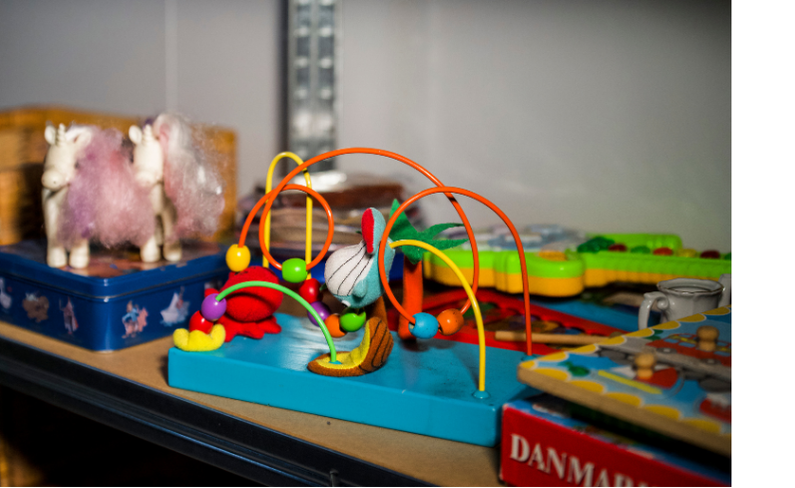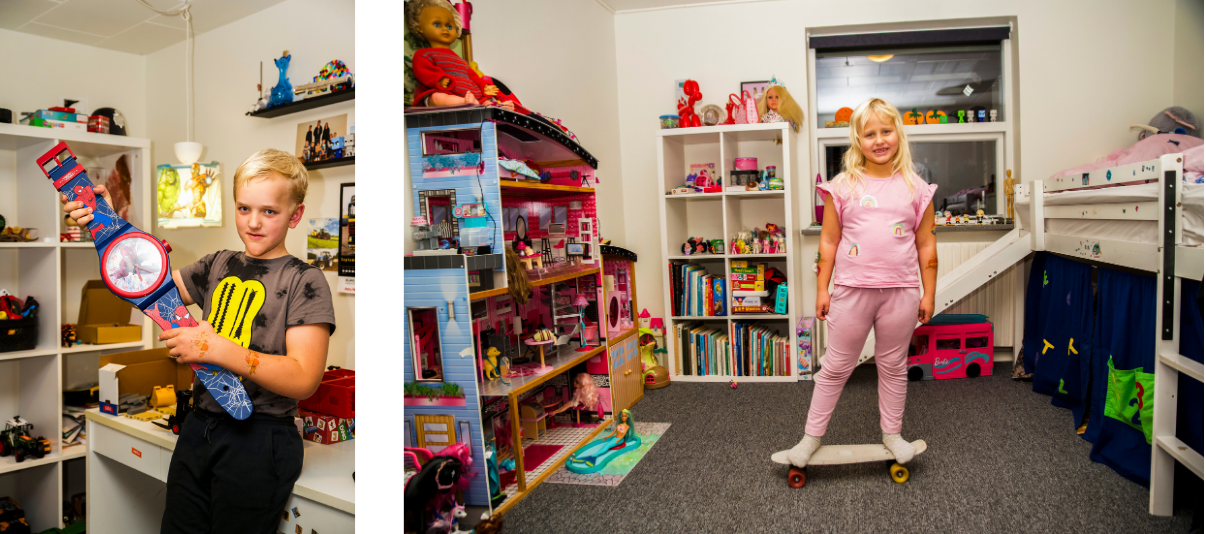To address the issue of waste, two swap shops have been set up in the climate villages of Skive (Denmark), by the citizens themselves. There, you can hand in used items for others to benefit from, an initiative that has especially created excitement among the youngest in the area. Toys are changing hands across the community, giving children a concrete reason to think more sustainably in their everyday lives. In this article, you will learn how this initiative operates, hear directly from residents about their experiences, and gain insights from researcher Nanna Jordt Jørgensen on the role children can play in the green transition.
Globally, 80% of toys end up in landfills, incinerators, or in the ocean[i]. In a world of growing environmental concern, where waste accumulates incessantly, leading to the proliferation of trash and microplastics in our oceans[ii], this number does not leave us unfazed. The question of attempting to prolong the currently much too short life cycle of toys is thus crucial to tackle. But where to start? How does one organize such an endeavour? And how do we teach our children about these issues and involve them?
The residents of the Skive climate villages (Denmark) have attempted to address these issues in their newest initiative. The purpose of the Climate Village concept is to let residents decide how they want to work with the green transition and develop their own community activities around it. Green initiatives are thus created and led by locals rather than the municipality, leading to innovative and practical need-based projects. Their recent concept is a great example of the strength of this method: swap shops have been installed in the villages, not only providing a circular economy opportunity, but also teaching children about consumerism and the life cycle of objects in a concrete, simple way.

How do the swap shops work?
My impression is that people want to give to the community and take care of it. In addition, it has almost become a meeting point for the villages. If you are missing something, you just ask – and there is always someone who knows someone.
These are not your usual second-hand shops. Unlike thrift stores, everything in the swap shops is free; the motto being: what may be “waste” to one person can be a resource for someone else. Thanks to this brilliant concept and demonstration of community, residents are actively reducing their waste footprint, all the while providing free resources for others.
 33-year-old Anne Sofie Højbjerg, a resident who has helped develop the concept for the swap shops, explains that from the very beginning, the design of the containers was made with the children in mind, and it seems to have paid off. Local children have been pleased to find toys of every kind, ranging from plastic unicorns to cardboard puzzles and wooden blocks — all passed down from one of their neighbours.
33-year-old Anne Sofie Højbjerg, a resident who has helped develop the concept for the swap shops, explains that from the very beginning, the design of the containers was made with the children in mind, and it seems to have paid off. Local children have been pleased to find toys of every kind, ranging from plastic unicorns to cardboard puzzles and wooden blocks — all passed down from one of their neighbours.
Parents noticed that kids’ interests can change quickly over time, leading to previously beloved toys being left aside. The idea behind the shops was thus to enable children to save their toys from becoming trash, have the satisfaction of handing them down to another happy child, and potentially gain a new pre-loved item in the process. For example, 11-year-old Mads was for a long time fascinated by dragons and dinosaurs, and when this interest began to fade, he handed in six plastic dinosaurs in perfectly fine condition.
It’s kind of nice to give the toys away – then other kids can be happy about them.
The Vendelbo Kristensen family is another example of the success of this initiative. They report having already gone down to the shop about twenty times, their two kids exchanging a dozen toys in the process. They were even able to find a skateboard and horse-riding equipment! Due to the popularity of the shop with their kids, the family decided to set up a rule: you can only take a toy if you leave another one behind. This way, they were able to reduce clutter, all the while teaching the children an important lesson…

A simple early-life lesson in sustainability
According to Nanna Jordt Jørgensen, PhD in Education for Sustainable Development and Associate Professor at Copenhagen University College, if you want to teach your children about climate and sustainability, it is important to start from something that children can touch and feel, and where they themselves can help find the solutions. Therefore, a swap shop or waste sorting are good initiatives that involves children in the green transition on a small scale.
Dr. Jordt Jørgensen explains that there is an educational potential in giving children an understanding of the time perspective of our consumption. Working with second-hand items is an efficient way of turning something abstract into a concrete concept.
All these things have a story. They are made of something, come from something and have previously belonged to someone else – and what happens to them when I no longer use them? It is extremely important that children get a sense that many of the things we surround ourselves with in our everyday lives have a life before and after us.
Although these seem like complicated topics, and as adults, we might assume that children are too young to have these kinds of discussions, research shows otherwise. According to Nanna, children down to preschool age already know about climate change and the environment, and it is important for us to answer their difficult questions.
The users of the swap shops in Skive have indeed reported the positive experiences they’ve had with engaging in this topic. Mads and his little brother, 6-year-old Kristian, have already visited the shop a few times, understanding that their donation will be found by another excited child and extend the toy’s life.
It gives the boys a lesson that things can be used several times and across generations. And when we come down there a week later, we notice: oh, your dinosaur is gone – someone was probably happy to take it home. I think that’s a good thing to learn.

Much research indicates that the learning processes around sustainability should take place in all parts of a child’s everyday life: in school, at home, and in the local community. Particularly, community spirit in a village plays a crucial role. Dr. Jordt Jørgensen explains that an important learning in order for children to be able to understand these issues, practically and mentally, is that we do not just act as individuals —the responsibility is shared. Children should thus experience first-hand how communities join forces, and the difference it can make!
Clearly, the swap shops have already had a positive effect in the climate villages, whether on the children, their parents, the community, or the green transition. This simple yet efficient initiative is a great example of how small-scale efforts and citizen-led action can have widespread effects. The good news is: such local initiatives can be started anywhere, by anyone! We encourage you to think about how your own community can create and benefit from just one small swap shop.
I hope it’s something we can continue with for many years. If it continues to run as it does now – then it has just been a huge success.
[i] Robertson-Fall, T. (2021, February 10). Creating a circular economy for toys. Solutions to design out waste and pollution. Ellen MacArthur Foundation. https://ellenmacarthurfoundation.org/articles/creating-a-circular-economy-for-toys
[ii]Great Pacific Garbage patch. (n.d.). National Geographic. https://education.nationalgeographic.org/resource/great-pacific-garbage-patch/
